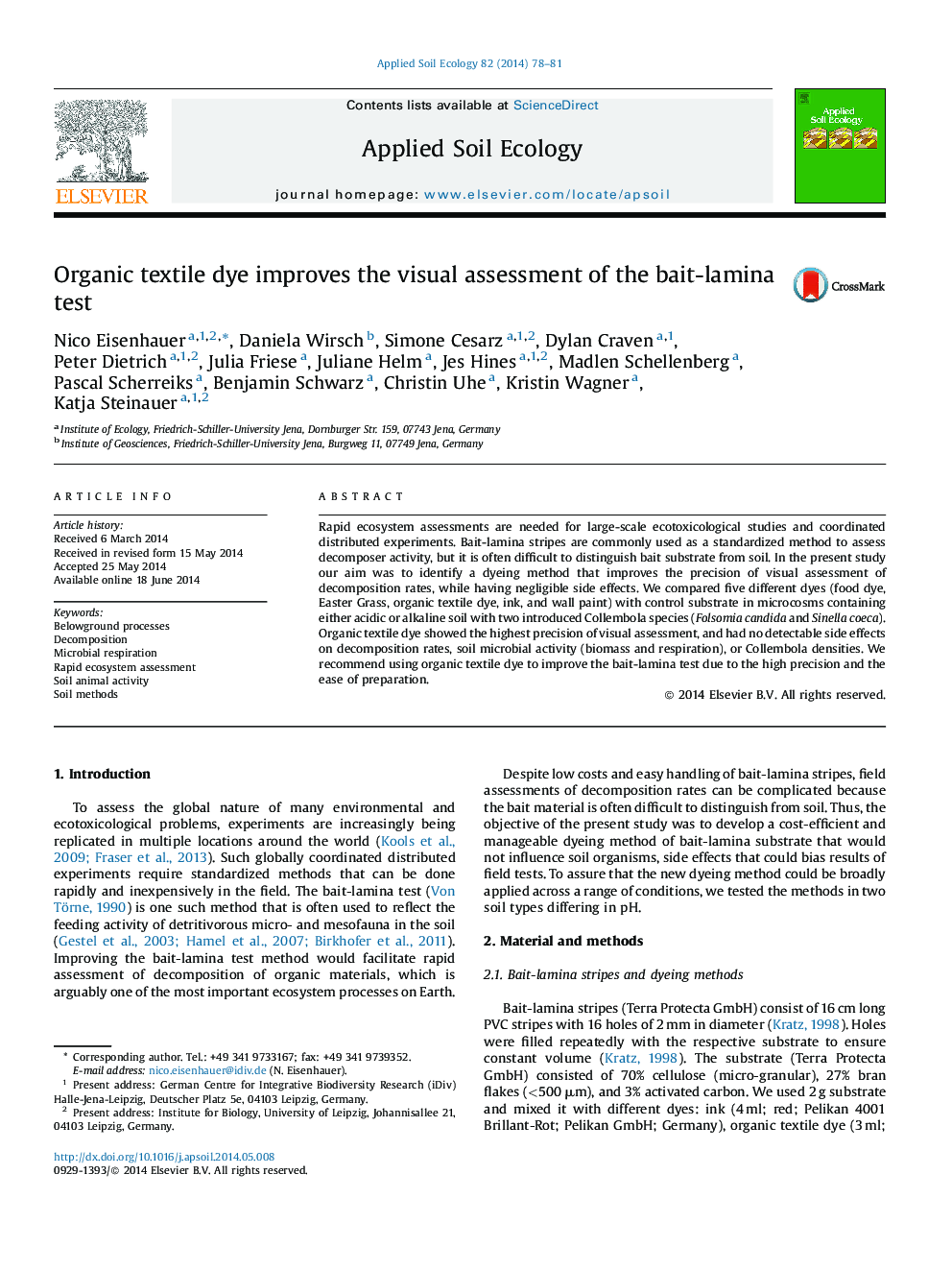| Article ID | Journal | Published Year | Pages | File Type |
|---|---|---|---|---|
| 4382153 | Applied Soil Ecology | 2014 | 4 Pages |
•We tested 5 dyes for bait-lamina stripes to improve precision of visual assessment.•Textile dye significantly increased the precision of visual assessment.•Textile dye and Easter Grass decomposed at similar rates as control substrate.•These two dyes had no detectable side effects on Collembola and soil microbes.•We recommend organic textile dye due to improved precision and easy handling.
Rapid ecosystem assessments are needed for large-scale ecotoxicological studies and coordinated distributed experiments. Bait-lamina stripes are commonly used as a standardized method to assess decomposer activity, but it is often difficult to distinguish bait substrate from soil. In the present study our aim was to identify a dyeing method that improves the precision of visual assessment of decomposition rates, while having negligible side effects. We compared five different dyes (food dye, Easter Grass, organic textile dye, ink, and wall paint) with control substrate in microcosms containing either acidic or alkaline soil with two introduced Collembola species (Folsomia candida and Sinellacoeca). Organic textile dye showed the highest precision of visual assessment, and had no detectable side effects on decomposition rates, soil microbial activity (biomass and respiration), or Collembola densities. We recommend using organic textile dye to improve the bait-lamina test due to the high precision and the ease of preparation.
